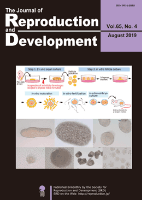
JOURNAL OF REPRODUCTION AND DEVELOPMENT
Scope & Guideline
Advancing the frontiers of reproductive science.
Introduction
Aims and Scopes
- Reproductive Physiology and Endocrinology:
Research in this area includes the hormonal regulation of reproduction, reproductive cycles, and fertility, with a focus on how various factors such as hormones and environmental conditions impact reproductive success. - Embryonic Development and Stem Cell Research:
This scope covers studies on embryonic development, including oocyte maturation, fertilization, embryo implantation, and the differentiation of stem cells, highlighting methodologies to enhance developmental competence. - Assisted Reproductive Technologies (ART):
The journal emphasizes innovative ART methods, including in vitro fertilization (IVF), cryopreservation techniques, and genetic manipulation, aiming to improve reproductive outcomes in both livestock and laboratory animals. - Comparative Reproductive Biology:
Research comparing reproductive mechanisms across different species provides insights into evolutionary adaptations and potential applications in veterinary and human medicine. - Impact of Environmental Factors on Reproduction:
Studies addressing how environmental stressors, such as temperature and diet, affect reproductive health and development are critical, particularly in agricultural contexts. - Genetics and Epigenetics in Reproductive Biology:
This area involves exploring genetic and epigenetic factors that influence fertility, embryo quality, and developmental processes, contributing to the understanding of heritable traits.
Trending and Emerging
- Molecular Mechanisms of Fertilization and Development:
There has been an increasing focus on understanding the molecular and cellular mechanisms that govern fertilization and early embryonic development, driven by advancements in molecular biology techniques. - Regenerative Medicine and Stem Cell Applications:
Research exploring the use of stem cells for regenerative purposes in reproductive biology is on the rise, including studies on deriving embryonic stem cells and their applications in livestock. - Impact of Nutrition and Metabolism on Reproductive Health:
Emerging studies are increasingly investigating how nutritional factors and metabolic conditions influence reproductive outcomes, reflecting a holistic approach to reproductive health. - Technological Innovations in Reproductive Technologies:
The use of cutting-edge technologies, such as CRISPR for gene editing and advanced imaging techniques for embryo monitoring, is rapidly expanding, showcasing the integration of technology in reproductive science. - Environmental Stressors and Fertility:
Research on how environmental factors, including climate change and dietary influences, impact fertility is gaining traction, highlighting the importance of sustainability in reproductive health.
Declining or Waning
- Traditional Breeding Techniques:
There has been a noticeable decline in publications focusing solely on traditional breeding practices, as newer technologies and methodologies in reproductive science gain more attention. - Basic Embryo Culture Techniques:
Research specifically on basic embryo culture methods appears to be waning, likely due to advancements in more sophisticated techniques that enhance embryo viability and quality. - Animal Models for Reproductive Disorders:
While animal models are still used, there has been a reduction in studies focusing on conventional models for reproductive disorders, possibly due to the emergence of more relevant genetic models or in vitro systems.
Similar Journals
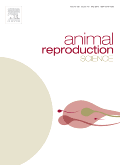
ANIMAL REPRODUCTION SCIENCE
Exploring the Science Behind Animal ReproductionANIMAL REPRODUCTION SCIENCE, published by Elsevier, is a leading journal dedicated to the field of animal reproduction and developmental biology. With an ISSN of 0378-4320 and an E-ISSN of 1873-2232, it serves as a vital resource for researchers, professionals, and students interested in advancing their understanding of reproductive mechanisms across various species. The journal has been recognized for its high-quality contributions, achieving a Q1 ranking in Animal Science and Zoology and showcasing its significant impact in the areas of Endocrinology and Veterinary Medicine as per the 2023 category quartiles. Covering a wide range of topics from reproductive physiology to genetic implications, this journal not only highlights innovative research but also fosters interdisciplinary dialogue in the rapidly evolving world of animal science. Though not currently offering open access, it remains a crucial platform for disseminating pivotal research findings from across the globe. With its rich history dating back to 1936, ANIMAL REPRODUCTION SCIENCE continues to drive excellence in animal reproduction studies, positioning itself at the forefront of the field, and solidifying its relevance in both science and industry.

THERIOGENOLOGY
Unveiling the complexities of reproductive strategies in animals.THERIOGENOLOGY is a prestigious academic journal published by Elsevier Science Inc, dedicated to the field of veterinary reproduction and animal science. With an impressive impact factor and recognized as a Q1 journal in various categories including Animal Science and Zoology, Equine, Food Animals, and Small Animals, THERIOGENOLOGY has established itself as a vital resource for researchers, practitioners, and students alike. Founded in 1974, the journal covers a broad spectrum of topics related to reproductive physiology, biotechnology, and the health management of food and companion animals. Although it does not currently offer open access, researchers can benefit from its comprehensive articles and reviews that push the boundaries of knowledge in veterinary science. With a significant placement in the Scopus rankings, ranking #1 in multiple veterinary categories, THERIOGENOLOGY serves as an essential platform for advancing the understanding of reproductive strategies and practices, thereby contributing directly to the fields of animal husbandry and veterinary medicine.
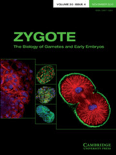
ZYGOTE
Fostering Collaboration in Biological Research.ZYGOTE is a prominent academic journal published by Cambridge University Press, focusing on the fields of Cell Biology and Developmental Biology. Established in 1993, this journal serves as a platform for high-quality research that advances our understanding of the complex processes that underlie cellular and developmental mechanisms. While currently classified in the Q4 quartile for both fields, ZYGOTE provides valuable insights and contributions from early-stage research to established studies, making it a noteworthy resource for researchers and professionals seeking to explore innovative developments in biology. Although it does not offer open access, the journal maintains rigorous peer-review standards to ensure the integrity and relevance of the published work. With its ongoing commitment to disseminating knowledge, ZYGOTE plays a significant role in the scientific community, fostering collaboration and inspiration among students, researchers, and professionals alike.

Reproductive Biology and Endocrinology
Pioneering Insights in Reproductive and Endocrine HealthReproductive Biology and Endocrinology, published by BMC, is a distinguished open-access journal established in 2003, catering to researchers and professionals in the interdisciplinary fields of reproductive biology, endocrinology, and related biomedical sciences. With a notable impact in 2023, the journal has achieved Q1 rankings in Obstetrics and Gynecology, Reproductive Medicine, and Endocrinology, alongside a Q2 ranking in Developmental Biology, establishing itself as a pivotal source of high-quality research and insights. The journal's commitment to freely accessible research promotes knowledge dissemination across its domains, which is crucial for advancing understanding of reproductive health and endocrine mechanisms. With a robust Scopus ranking showcasing its relevance—17th out of 209 in Obstetrics and Gynecology, and 8th out of 90 in Reproductive Medicine—it serves as an essential resource for academics and clinicians alike, facilitating innovative research and fostering collaboration within the global scientific community.

Reproductive Biology
Pioneering Discoveries in Animal ScienceReproductive Biology is a premier academic journal published by Elsevier, dedicated to advancing the field of reproductive science. With an ISSN of 1642-431X and an E-ISSN of 2300-732X, this journal has been serving the scientific community since its inception in 2001. It notably holds a Q1 ranking in Animal Science and Zoology as of 2023, underscoring its significant impact and prominence in this domain. The journal encompasses a wide array of topics surrounding reproductive biology, including but not limited to endocrinology and developmental processes, making it an essential resource for researchers and practitioners. Although it operates under a traditional access model, its comprehensive scope offers valuable insights that contribute to advancements in reproductive health, animal conservation, and biotechnology. Published in the Netherlands, Reproductive Biology aims to foster interdisciplinary collaboration and innovation, ultimately enriching our understanding of reproductive mechanisms across various species. Researchers, professionals, and students alike will find this journal an indispensable platform for disseminating groundbreaking research and engaging with the latest findings in reproductive science.
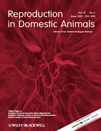
REPRODUCTION IN DOMESTIC ANIMALS
Fostering Knowledge for a Healthier Animal FutureREPRODUCTION IN DOMESTIC ANIMALS is a distinguished peer-reviewed journal published by Wiley that has been at the forefront of advancing knowledge in the field of animal science since its inception in 1966. With an ISSN of 0936-6768 and an E-ISSN of 1439-0531, this journal specializes in the intricate aspects of reproductive biology in domestic species, supporting both scientific research and practical applications in agriculture. Ranked Q2 in Animal Science and Zoology and Q3 in both Biotechnology and Endocrinology, the journal plays a crucial role in addressing contemporary challenges in animal reproduction, contributing significant insights to researchers, professionals, and students alike. Although it does not currently offer open access, its editorial team is committed to publishing high-quality studies that enhance our understanding of reproductive mechanisms and foster advancements in the field. The convergence of data, innovative methodologies, and practical implications in the journal fosters a rich dialogue among scientists and practitioners worldwide, making it an essential resource for anyone invested in animal reproductive health.
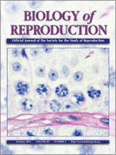
BIOLOGY OF REPRODUCTION
Elevating Knowledge in Cell and Reproductive BiologyBIOLOGY OF REPRODUCTION is a premier journal published by Oxford University Press Inc, dedicated to advancing research in the fields of reproductive biology, cell biology, and reproductive medicine. With an impressive impact factor and a strong ranking as Q1 in reproductive medicine and miscellaneous medicine, as well as Q2 in cell biology, this journal offers a vital platform for disseminating innovative findings and pivotal studies that shape our understanding of reproductive processes. Since its inception in 1969, BIOLOGY OF REPRODUCTION has become a key resource for scientists, clinicians, and students alike, providing insights that drive the future of reproductive health and research. Although not an open-access publication, it remains a respected authority, reflecting a commitment to high-quality peer-reviewed articles. The journal's comprehensive scope includes molecular and cellular aspects of reproduction, reproductive health, and associated technologies, making it indispensable for professionals looking to stay at the forefront of breakthroughs within the field.

Reproductive Medicine and Biology
Transforming knowledge into practice in reproductive health.Reproductive Medicine and Biology, an esteemed journal published by WILEY, stands at the forefront of advancements in the field of reproductive health and associated biological sciences. With an impact factor that underscores its relevance—ranking in Q1 for Reproductive Medicine and Q3 in Cell Biology—this journal is distinguished by its commitment to disseminating high-quality, peer-reviewed research since its transition to Open Access in 2002. Based in Japan, the journal caters to a global audience, providing vital insights into reproductive biology, therapeutics, and innovative practices. With Scopus rankings placing it at #22 out of 90 in Reproductive Medicine and a commendable percentile ranking, Reproductive Medicine and Biology aims to foster dialogue and knowledge transfer among researchers, professionals, and students, paving the way for breakthroughs in understanding reproductive health.
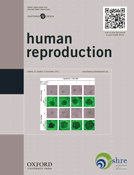
HUMAN REPRODUCTION
Connecting researchers and practitioners for impactful discoveries.HUMAN REPRODUCTION is a prestigious academic journal published by Oxford University Press, dedicated to advancing the field of reproductive medicine. With an impressive impact factor highlighting its significance, the journal ranks in the top quartile (Q1) for Obstetrics and Gynecology, Rehabilitation, and Reproductive Medicine, showcasing its crucial role in disseminating high-quality research. Founded in 1986, it has become a key resource for researchers, practitioners, and students interested in cutting-edge developments and innovative practices in human reproduction. Despite not currently offering open access, the journal continues to publish a wealth of peer-reviewed articles that contribute substantially to clinical knowledge and practice. With Scopus rankings placing it among the top journals in its categories, HUMAN REPRODUCTION remains an essential platform for discussion and dissemination of vital findings impacting reproductive health globally.
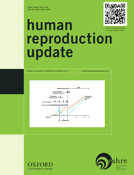
HUMAN REPRODUCTION UPDATE
Unveiling the Latest in Reproductive ScienceHUMAN REPRODUCTION UPDATE, published by Oxford University Press, stands as a leading journal in the fields of Obstetrics and Gynecology and Reproductive Medicine. With an impressive Q1 ranking in both categories according to the 2023 category quartiles and a significant Scopus rank, it is recognized as one of the top journals globally in these disciplines, catering to the most relevant and cutting-edge research. The journal has been a crucial platform for disseminating vital findings and reviews from 1995 to 2024, contributing to advancements in human reproductive health. With its focus on publishing high-quality, peer-reviewed articles, it serves as an essential resource for researchers, healthcare professionals, and students seeking the latest insights and developments in reproductive science. As the journal aims to foster informed discussions and encourage further research, it remains committed to shaping the future of reproductive health and medicine.